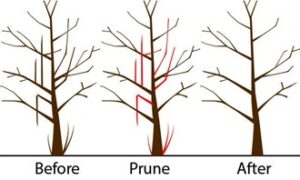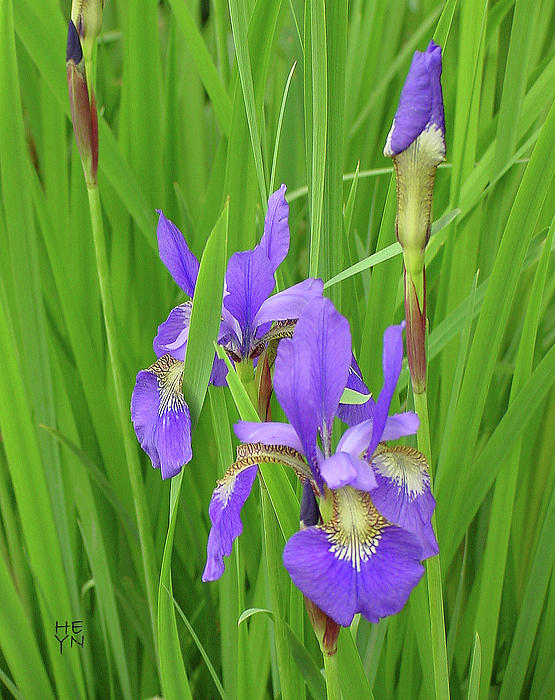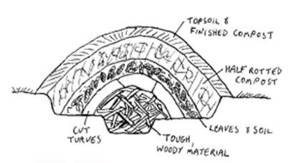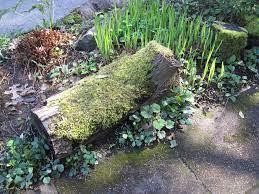General Care:
- Mulch to conserve moisture and reduce weeds.
- Water 1 inch per week from spring until after harvest.
- Roses are heavy feeders.
- Spring: Fertilize with a slow release, balanced fertilizer.
- Throughout season: Feed every 4 weeks.
- Late summer, early fall: Stop fertilizing 6 – 8 weeks before frost date in preparation for winter.
- NOTE: Very sharp thorns. Wear gloves when handling.
Pests & Diseases:
- Susceptible to rose borers, powdery mildew, and fungus.
Late Winter/Early Spring Pruning Steps (start of new growth):
- Remove all remaining leaves.
- Prune dead wood back to the base.
- Prune out crossing branches. Ideally create an open vase-like shape to increase air circulation.
- Remove thin and weak growth (anything thinner than a pencil).
- Shape the remaining canes into desired shape by cutting ¼” – ½” above an outward facing bud, at an angle sloping away from the bud.
- Dispose of any leaves and waste to prevent spread of disease.
Fall Pruning (after killing frost):
- Prune only as needed for winter preparation.
- Trim longer stems to keep from snapping in winter storms.
- Trim crossed branches to prevent rubbing.
- Remove dead/diseased branches and foliage.












 Master Gardener Carolyn Langdon advises you to build a small rain garden at the top of your slope. Add a small berm at the top of and/or mid-way down your slope. Put in a berm of logs, branches, soil and/or rocks to slow down the water running off and to allow time for the rain to absorb and for plant roots to establish. The idea is to place any material that will act to obstruct or slow down the path of water. Organic material has the additional benefit of providing texture and nutrients to your soil as it breaks down.
Master Gardener Carolyn Langdon advises you to build a small rain garden at the top of your slope. Add a small berm at the top of and/or mid-way down your slope. Put in a berm of logs, branches, soil and/or rocks to slow down the water running off and to allow time for the rain to absorb and for plant roots to establish. The idea is to place any material that will act to obstruct or slow down the path of water. Organic material has the additional benefit of providing texture and nutrients to your soil as it breaks down.
